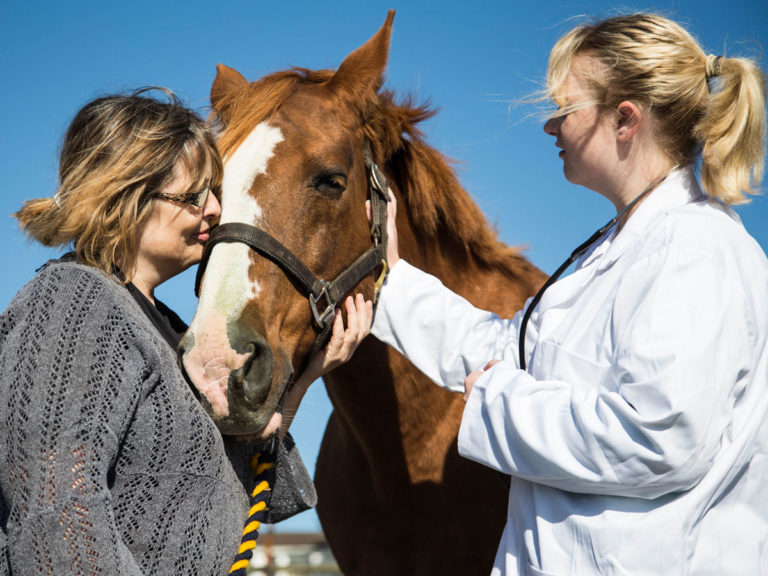 Annual or semi-annual reviews of your cash-flow cycle can give you excellent insight into your financial management and maximize the cash available to help run your business better.
Annual or semi-annual reviews of your cash-flow cycle can give you excellent insight into your financial management and maximize the cash available to help run your business better.Veterinary businesses are not immune to the challenges of cash shortages. It seems that some months we work hard; yet when we see the financial statements that our bookkeepers or accountants prepare for us, our bank balances don’t reflect the amounts we have billed or paid in expenses.
It is difficult enough to take care of our clients and patients, but to have to spend what few hours there are left figuring out what happened to the money we are supposed to have can be very demoralizing. This cash shortfall often becomes noticed when we go to buy a new piece of equipment or during the slow season, when we realize we don’t have enough money in the bank to carry us through until we get busy again. How does this happen? Where is all the money we made?
This is the foundation for what is called the cash flow, or Cash Conversion Cycle. Simply put, it is the time it takes to convert sales and services into cash, while accounting for the credit we offer clients and for paying suppliers. Fortunately, there are procedures and policies for Accounts Receivable, Inventory and Accounts Payable that a business can use to manage the Cash Conversion Cycle to increase or decrease the amount of cash available in a business.
Regardless of what revenue is for a given period of time, the main ways cash on hand can be increased are by doing one or more of the following:
• Decrease Accounts Receivable payment time, because clients are paying their bills quicker.
• Decrease inventory turnover time (ideally you get inventory, sell it and get paid before the bill is due to the supplier).
• Increase Accounts Payable turnover time by taking longer to pay suppliers.
Conversely, cash availability can be decreased through the opposite of the above.
An example of a veterinary business cash flow cycle looks like the following:
Inventory Days (the average amount of time it takes to sell inventory)
Example Inventory Total…………….$50,000
Example Cost of Sales in a Year…$200,000
Inventory Days = Inv/(Cost of Sales/365) or 91 Days
Accounts Receivable (AR) Age (the average amount of time it takes to collect accounts receivable)
Example Account Receivable……… $90,000
Example Annual Sales……………….$800,000
AR Days = AR/(Sales/365) or 41 Days
Accounts Payable (AP) Age (the average amount of time it takes to pay suppliers)
Example Accounts Payable…………..$40,000
Example Purchases or Cost of Sales…$200,000
AP Days = AP/(Cost of Sales/365) or 73 Days
Working Cash Gap
Inventory Days + AR Days – AP Days
would be 91 + 41 – 73 = 59 Days
It is important to understand the Working Cash Gap, because the larger it is, the more money is tied up in things other than cash on hand. In other words, potential cash is being used to carry the AR that clients owe a business, or in more inventory than is needed, or in paying suppliers faster than they need to be paid.
In the ideal world, we would want to be paid by our clients within 30 days because our suppliers want to be paid within that period of time. At the same time, we want less than 30 days of inventory on hand, so we aren’t paying for supplies we haven’t sold within the past 30 days. Another way to look at the Working Cash Gap is that the higher the number, the more we have to use savings or borrow money to finance our business. This means that we are paying interest to a bank, or we are using personal or business money we would want to use on other things, such as paying off student debt or buying equipment. Fortunately, there are guidelines and recommendations to help a vet business increase the amount of cash on hand.
Accounts Receivable
Ideally, any business wants its clients to pay at the time of service. We would like to think that veterinarians aren’t different from a grocery store, a gas station or Amazon. Unfortunately, many equine veterinarians follow a mindset that we have to offer credit to keep or attract clients.
Our own veterinary practice thought the same way until a few years back, when we found that we were borrowing too much money in order to finance our business, because our AR age averaged 100 days. It was taking more than three months to get paid by our clients! We couldn’t carry on that way and hope to survive, so we instituted a payment-at-time-of-service policy for all new clients and current clients that were slow to pay. Existing clients that paid quickly were allowed to keep their credit terms. We kept credit cards on file or ensured that clients had cash or a check at appointments in line with this new policy. As a result, our AR age has consistently been at around 25 days for the past two years.
Most horse owners are accepting of these types of terms; those who aren’t usually are the ones who are very slow to pay. It is harder with racetrack or breeding clients, since they are absent owners and because of the frequency with which we have to see those types of horses. We bill those owners monthly.
Inventory
It seems that nothing makes a veterinarian happier than seeing a full pharmacy or a fully stocked truck. The problem with that scenario is that with the one- to two-day delivery services we get from our suppliers, we don’t need to carry weeks or months of inventory on hand. Our practice has adopted a philosophy of keeping no more than two weeks of an item on hand in order for us to keep our inventory at a reasonable level.
We have divided our inventory items into AA, A, B and C categories depending on how often we sell an item.
AA = top 5% of inventory items sold in a month
A = the next 20% of inventory items sold in a month
B = the next 25% of inventory items sold in a month
C = all the rest
One could list these items by value, but we are more concerned about frequency of sales. Some items are very expensive to sell but are dispensed infrequently, so we would only want to have a single unit on hand. Cheaper items are sold daily, so we want to make sure we have enough available so we don’t run short, but not so many that items are not getting sold in a timely manner.
Four times a year we will look at the AA and A items and calculate how many of each we sell in a 12-week period, then divide by six to give us the two weeks of quantities we need on hand. Reviewing these items quarterly allows us to adjust for seasonal demand for products such as reproduction supplies or show horse medications.
Twice a year we review the B items, and once a year we review the C items, since those are items that are infrequently sold.
There has to be some leniency of amounts carried due to the time of year or the time support staff can devote to inventory. There has to be a cost benefit so that someone on staff is not spending more time on inventory than what the savings would be. However, during vaccine season, you might want to have a 30-day supply of vaccines because it isn’t uncommon to vaccinate what would normally be two weeks’ worth of horses over a couple of days.
Another quick way to measure how well your inventory management is performing is to divide your annual purchases from total sales. The amount will vary depending on the type of practice one has. For example, a racetrack practice will use and dispense more medication, so they might have a cost of goods (COG) sold of 30-40%, while a pleasure horse practice will offer more professional services and could have a COG of 15-25%. After you have collected enough data over a period of time, you can track your COG level for a season and compare it to the previous year to see how you are doing. If the number is going up, it is worth investigating your inventory purchases to find out the reason for the increase.
Accounts Payable
It is always a good idea to maintain good relationships with suppliers so there isn’t the concern of deliveries held up because of an overdue account. Also, suppliers should be considered as key partners in a business. For example, they are more likely to offer sponsorship money for a client CE event to their clients who pay quickly.
It is important to keep in mind that all of the cash-flow cycle discussion affecting our veterinary business is going on with our suppliers. Of course, there can come a time in any business that might require leniency when paying a supplier. If your business has a history of paying within a reasonable time, then you could expect some forgiveness if you need to pay in 60 days for a short period of time because of illness, injury or a temporary slowdown.
If a business is better able to manage its cash-flow cycle, the expectation is that there will be more cash on hand for other needs. If we adjust the previous example for a well-managed business, we could expect to see these results:
Inventory Age
Inventory Total……………………………..$17,000
Cost of Sales………………………………..$167,000
Inventory Days = Inv/(Cost of Sales/365) or 37 Days
Accounts Receivable Age
Account Receivable……………………… $60,000
Sales……………………………………………$800,000
AR Days – AR/(Sales/365) or 27 Days
Accounts Payable Age
Accounts Payable………………………….$15,000
Purchases = Cost of Sales……………$167,000
AP Days = AP/(Cost of Sales/365) or 33 Days
Working Cash Gap
Inventory Days + AR Days – AP Days
37 + 27 – 33 = 31
Cash Difference
Increase in Working Capital would be $180,000-$92,000 = $88,000!
A practice owner should compare his or her business against itself year after year. If you have 25% COG in 2015, try to aim for a couple of percentage points lower without disappointing clients because you run out of certain medications. Similarly, try to lower the AR age each year, although there might come a time that your improvements plateau because of the types of client or patients you have.
Take-Home Message
We all agree that it is better to have cash in the hands of the business owner rather than tied up in inventory or with clients. Annual or semi-annual reviews of your cash-flow cycle can give you excellent insight into your financial management and maximize the cash available to help run your business better.
Current Revised
Inventory Age $50,000 $17,000
Account Receivable Age $90,000 $60,000
Account Payable $40,000 $15,000
Total $180,000 $92,000








